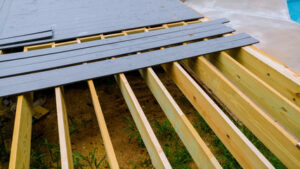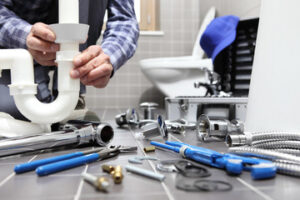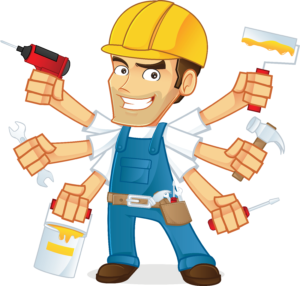Windows are one of the first features that visitors notice about your home. Updating your windows can improve aesthetics, increase energy efficiency, and reduce the strain on your HVAC system.

Windows are made up of a frame, muntins (small bars that divide window glass), and a sash. Expert installers will ensure that your new replacement windows are properly installed for optimum performance. Contact Replacement Windows Potomac for professional help.
Old windows are notorious energy hogs, but new replacement windows provide strong return on investment in the form of lower utility bills and improved comfort. Adding new windows to your home also increases its value, making it easier to sell when you decide to move.
Many homeowners neglect their windows, but they are one of the most important factors in a home’s energy efficiency. Old or poorly insulated windows allow cold air to enter during the winter and hot air to escape during the summer, driving up heating and cooling costs. New windows improve home insulation, decreasing drafts and reducing energy consumption.
Aesthetics are another important consideration when choosing replacement windows. Many older windows are stained or painted in unsightly colors and have rotting frames and hardware. Replacement windows offer a wide range of styles, materials, and colors to fit your design preferences. They can enhance your home’s style, make it feel more comfortable, and block out outside noise.
Window technology has made significant advancements in recent years. Glass is now formulated to reduce heat transfer by reflecting infrared light while letting sunlight filter through. New windows feature multiple panes and dead air space, providing excellent insulation. Insulating gasses such as argon further increase energy efficiency.
Another benefit of new windows is their durability. New vinyl and fiberglass frames resist swelling, warping, and corrosion, and hardware is designed to withstand thousands of openings and closings. Additionally, insulated replacement windows are sealed to prevent water infiltration and the potential for mold and rot.
One downside of new replacement windows is their embodied energy—the energy used to produce the raw materials, manufacture and transport the windows, and install them in your home. According to Keith Haberern, an engineer in New Jersey, a single window requires about 2.3 million BTUs of energy just for its production. However, these new windows will continue to reduce your energy usage for years to come, making up for the initial environmental cost in just a few years.
Energy efficient replacement windows are a great way to upgrade your home and save money on energy costs. They’re available in a variety of styles to suit your taste, and they offer long-term savings and high return on investment.
Increased Home Value
New windows add value to your home by increasing the overall appearance and curb appeal of your house. They also reduce drafts and improve insulation, allowing more natural light to enter living spaces and brighten your home. This combination of beauty and efficiency makes a great impression on potential buyers and can help you sell your home in the future.
New window replacements are one of the top-rated projects for boosting home resale value, and they often have a cost-recoup of more than 80 percent. That is a significant return on your investment and can make a huge difference in the asking price for your home.
Buyers are looking for homes that are move-in ready and energy efficient, so new windows can be an excellent way to increase your home’s resale value. They can also save you money on your energy bills, as high-quality windows will be more effective at reducing drafts and improving insulation.
Depending on the type of windows you choose, they can enhance your home’s style and create a more spacious feeling inside. For example, bay and bow windows protrude from the home’s exterior, creating a more elegant look and offering expansive views of your yard and neighborhood. They are a beautiful addition to any home, and they can increase your property value by up to 10 percent.
Replacement windows are available in many styles, so you can find the perfect match for your home’s aesthetic and functionality. If you have a historic home, be sure to select windows that complement the architectural design without compromising the original charm. You can even hire a designer to help you choose windows that will fit your home’s unique aesthetic.
Old windows can detract from the overall look of your home and make it appear dated. New replacement windows can make your home look fresh and modern, which will appeal to buyers. New windows can also improve your home’s curb appeal, which is important if you want to sell your home in the future. For more information about improving your home’s energy efficiency and resale value with new windows, contact the experts at Andy’s Glass & Window Company in Fallbrook.
Increased Comfort
Old windows often let drafts, moisture, and outdoor pollutants into the home, impacting indoor comfort. Replacement windows create a cleaner, healthier living environment by preventing air leaks and creating more consistent temperatures. Advanced features like dual-pane glass and multi-chamber frames help reduce energy loss, reducing strain on heating and cooling systems. New windows also prevent condensation buildup and a humid, uncomfortable living environment that contributes to mold and mildew growth. Airtight seals also keep allergens, pollen, and dust from entering the home, enhancing respiratory health and comfort.
Changing out outdated windows often brings improved visual continuity and consistency to the home’s exterior, making it more attractive to prospective buyers. The wide selection of replacement window styles available helps complement a home’s architectural design and personal style preferences. Whether your home needs double-hung windows, sliding windows, picture windows, or casement windows, there are options to suit every taste and style.
Many older homes have single-pane windows that allow unwanted noise to travel through the interior of the home. Replacement windows in Strongsville feature insulated double- or triple-panes that create barriers against sound transmission, providing a quieter and more relaxing living space. Additionally, modern replacement windows can include gas-filled spaces between the glass panes that reduce noise by dampening vibrations.
New windows provide better thermal insulation, preventing heat loss in the winter and blocking excessive solar heat in the summer. Low-emissivity (Low-E) coatings on windowpanes minimize heat transfer to the home, reducing energy consumption and cutting utility bills. New replacement windows can also reduce the risk of harmful UV rays invading the home, protecting furniture, carpeting, and curtains from sun exposure that can cause fading.
The advanced materials used in today’s replacement windows are long-lasting and low-maintenance, requiring minimal upkeep and ensuring consistent, hassle-free performance for years. They’re designed to resist rot, warping, and damage from rain or snow, eliminating the need for painting or staining. Many styles also have tilt-in sashes for easy cleaning from inside the home, further minimizing maintenance. The wide variety of replacement window materials and styles means you can choose the one that best fits your needs without compromising on aesthetics or durability.
Increased Safety
When old windows allow drafts to enter your home, they’re doing more than just creating an uncomfortable living environment. The drafts also reduce indoor temperature consistency and result in rising power bills as you use more energy to heat your home during winter and cool it during summer.
New replacement windows are designed to improve energy efficiency by providing tighter seals and modern materials that prevent outside air from leaking into your home. The improved energy performance and consistency will result in lower heating and cooling costs throughout the year, helping you save money on your monthly power bills.
Aside from improving your home’s appearance, the new windows will add a level of safety by keeping intruders out and making it easier to escape your home in the event of an emergency like a fire. The new window designs are made with your family’s security in mind, incorporating features such as secure locking systems and impact-resistant glass to protect your loved ones from harm.
The most important factor in choosing the right replacement windows for your home is the accuracy of the measurements taken by your contractor. It’s critical to measure the height and width of your current window opening at three different points to ensure that the new windows fit perfectly.
Next, consider the material that your replacement windows are made of. Wood, vinyl, and aluminum are the most common options but they vary in terms of durability and maintenance needs. It’s also crucial to decide whether you prefer a traditional look or want something more modern in style. Once you’ve decided on the material and style, your window contractor can begin installing your new windows.
Before your contractor begins installation, it’s a good idea to remove any blinds or curtains that you may have on your windows to prevent them from getting scratched or soiled during the process. It’s also helpful to clear the area around the existing window to make sure that there are no obstructions or debris that could interfere with the installation process.
One of the most popular replacement windows is the sliding window. This type of window is ideal for homes with limited space as it allows for maximum ventilation without occupying a large area. Another option is the bay or bow window, which creates a spacious look in your home and lets you enjoy an expansive view of the outdoors.








